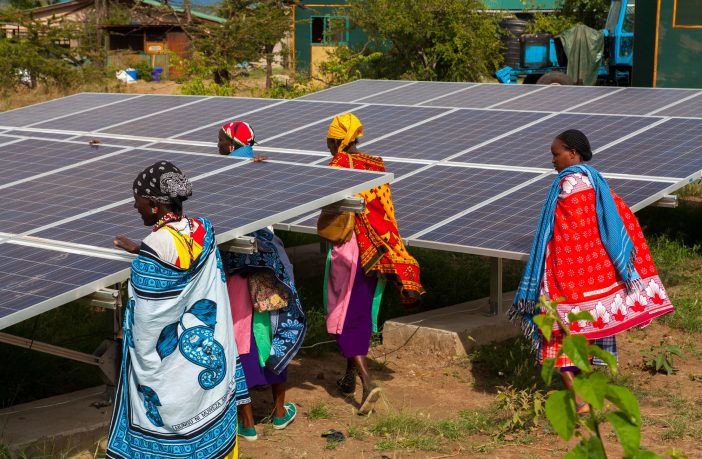- During the African Climate Summit this week, GOGLA launched its new paper ‘Powering Climate Adaptation and Justice: The Critical Role of Off-Grid Solar Technologies’ showcasing the climate adaptation potential of 5 off-grid solar technologies.
- GOGLA is the global association for the off-grid solar energy industry.
Off-grid solar is the fastest way to electrify hundreds of millions of the most climate-vulnerable people in the world, who have done the least to contribute to climate change. Solar energy kits (with communications appliances), solar irrigation, solar-powered fans, solar refrigeration units and solar-powered cold storage can help build climate resilience and combat extreme weather events, while reducing emissions.
Written with the support of the IKEA Foundation, in partnership with Acumen, Efficiency for Access, Ashden and WWF, the paper offers insight into the potential of off-grid solar solutions to power green growth and mitigate the impacts of droughts, floods and storms.
However, unlocking these benefits will take concerted support from development financiers, governments, philanthropists, and the private sector. The report also shares a call to action to rapidly increase access to off-grid solar solutions to reach energy-poor regions and ensure that those most climate-vulnerable are no longer left behind.
- Almost half a billion people have electricity access today through off-grid solar solutions and it is the least cost and quickest way to electrify 55% of the 675 million people who don’t have energy access today.
- 165 M people have been reached by solar-powered information appliances giving them better access to information on weather events, regenerative agriculture practices and public health announcements.
- Off-grid solar tech is already being used by 10 million micro, small and medium-sized enterprises (MSMEs) and supporting an estimated 370.000 FTEs.
- Solar water pumps boost crop yields without, with better irrigation in sub-Saharan Africa potentially leading to 50% improvement in agricultural productivity with low-carbon growth.
- Solar cold storage solutions could contribute to minimising the 37% food loss unintentionally lost between harvest and distribution in sub-Saharan Africa.
- Solar-powered space cooling has the potential to reach 318 million people without access to electricity in areas of extreme heat. High-performing fans are already reaching 7.5 million people, providing significant comfort benefits and an average increase of productivity of 2:20 working hours

Those least responsible for climate change are the worst affected by it. We must give them the tools they need to combat the droughts, floods and storms that they are already suffering,” said
Patrick Tonui, Head of Policy and Regional Strategy, GOGLA.
Link to the full report HERE
Author: Bryan Groenendaal















